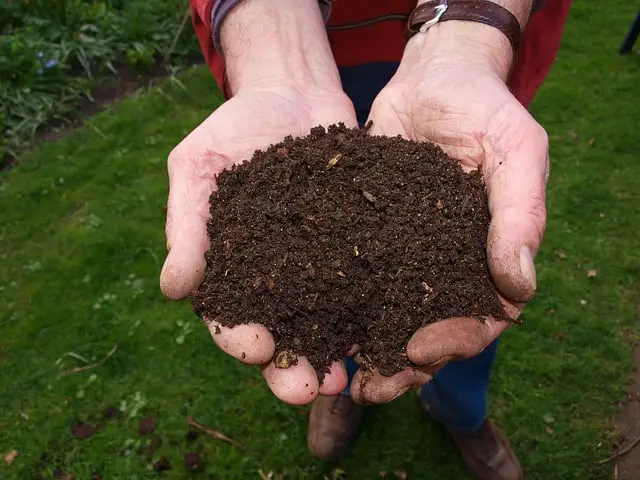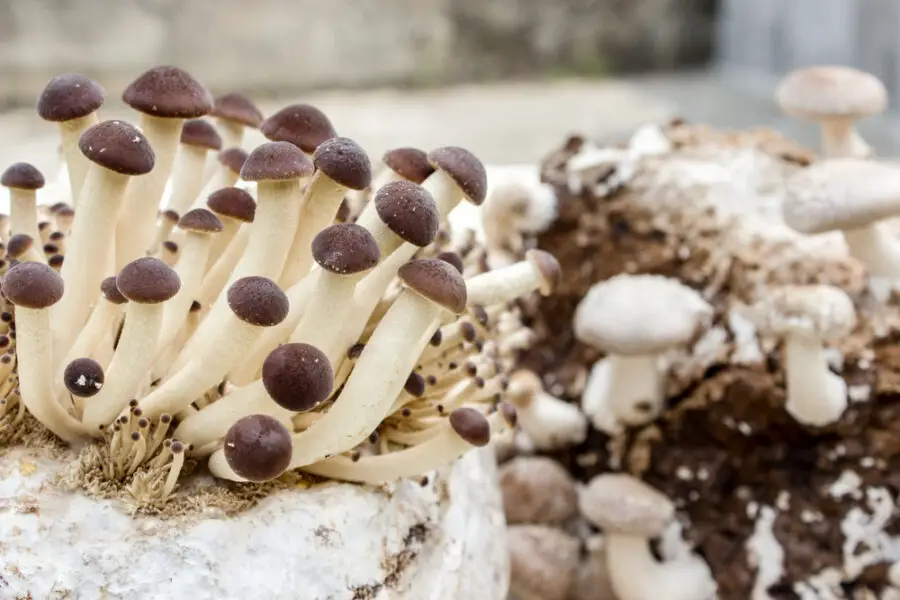Mushrooms are 90% water by nature and need a lot of moisture to survive. For this reason, you should water your mushrooms twice a day. Additionally, it is very important that the soil where your mushroom grows is constantly moist.
Moisten the soil often. Meeting your mushrooms’ daily water and moisture needs will help it to grow healthier and faster.
What Is The Right Way To Water My Kit?
If you want an abundant harvest, water is the key. Just like humidity and coolness, water is a very important factor for the healthy growth of a fungus.
From day one you should water your mushrooms at least 2 times a day. If you have time, there is no harm in watering 4-5 times a day while the mushrooms are young.
You can do this by filling a spray bottle with clean, non-chlorinated water and spritzing the mushrooms until they are moistened all over. It takes around 5 spritzes of the spray, and direct the spray towards the underside of the mushrooms if you can.
It is more important than the water reaches the soil rather than watering the mushrooms. Since fungi meet their water needs from the soil, the soil must be constantly wet. While watering, you should spray the water evenly across the whole bed of soil.
Does Mushroom Farming Require Water?
Irrigation is very important in mushroom farming. Considering the daily water needs of mushrooms, it becomes clear how important the irrigation process is.
There are some irrigation kits in mushroom farming, and these kits make the irrigation process more accurate and easier to manage, they complete the job more systematically and quickly.
These systems, which are generally used by large mushroom producers, are very practical and accelerate the work.
What is The Importance of Moisture in Mushrooms?
Moisture is the most essential element for mushrooms. Mushrooms choose moist environments to grow because it is necessary for their growth and reproductive cycles. If you are growing mushrooms indoors, you should adjust the humidity of the environment as necessary.
The higher the humidity, the faster the growth rate of the fungi. Humidity has a positive effect on the growth of mushrooms, helping them to retain their bodily moisture better.
Cool and moist places create excellent growing environments for fungi. Rainy weather provides the necessary environment for the rapid growth of mushrooms, and some mushroom species can appear overnight after heavy rain.
Do Mushrooms Need Sunshine?
Mushrooms do not need constant sunlight. Sunlight can help stimulate the growth of a fungus, but mushrooms do not need sunlight on a regular basis.
On the contrary, mushrooms prefer cool, shaded, wet weather to grow. Some mushrooms prefer growing in forests with adequate shade where sunlight is received sporadically, filtered by the trees.
Even when there is no sunlight, you can grow your mushrooms easily, so long as the soil stays warm. If mushrooms are exposed to continuous sunlight for a long time, they can exhibit growth defects.
Does Too Much Water Inhibit the Growth of Mushrooms?
Water is an essential resource for mushrooms. But giving your mushrooms more water than necessary can kill them.
It is enough to water a mushroom regularly twice a day. If you have the opportunity, you should also moisten the soil frequently.
But do not over-water. Mushrooms that take in more water than they need can become waterlogged and die.
How Do You Take Care Of a Mushroom Plant?
Mushrooms are very sensitive and need careful consideration. If you are an indoor grower, you need to simulate the mushrooms’ natural environment.
The more humid the environment, the faster the growth rate of the mushrooms. Keeping the humidity at a certain level and checking the soil moisture regularly is very important for the healthy growth of your mushrooms.
Another point is the water, wild mushrooms growing in nature are constantly wet with spring rains.
The soil wetted by these rains creates a wonderful environment for the growth of mushrooms. Indoor growers should also keep this in mind and water their mushrooms regularly.
You need to water your mushroom at least 2 times a day. You should apply the irrigation process to your soil rather than the fungi.
The last important factor is temperature. Fungi like cool, temperate environments and avoid extreme climates.
If a mushroom is exposed to excessive heat, growth abnormalities begin to appear, and if it is exposed to excessive cold, it may die. Therefore, maintaining an ambient temperature is very important.
How Do You Spray Water in a Mushroom Bag?
Spray water into the plastic bag twice a day, this will water the mushrooms and increase the humidity levels in the bag. You can also increase the watering to 4 times a day according to the humidity levels, but this is only recommended once the mushrooms have sprouted and are approaching maturity.
Is it Hard to Grow Indoor Mushrooms?
Contrary to popular belief, growing mushrooms at home can be a bit challenging at first but gets easier over time. Helping your mushrooms to establish themselves is the hardest part of the process.
You will need to create an indoor environment close to the environmental conditions found outdoors. Mushrooms are easily adaptable creatures, but good results cannot be obtained without creating the necessary conditions.
Basic points such as humidity, temperature, and irrigation should be planned accordingly and you will need to pay attention to the content of the soil. Mushroom growing kits designed for indoor cultivation provide everything a mushroom needs to grow in terms of soil, but you will need to replicate the correct temperatures.
Although many people who have just started mushroom cultivation do not get the results they were expecting in the first harvests, over time and as mushroom hyphae establish themselves under the soil, growing mushrooms every year becomes easier and more predictable.
How Much Money Do You Need to Start a Mushroom Farm?
The cost of growing mushrooms varies according to the size of the farm you wish to begin. If you are thinking of starting a small farm, you can get it done for $5,000-10,000. If you have a big farm in mind, this amount can vary between $50,000-$100,000.


